

23 March to 15 July 2012 Jewish Migrants from Eastern Europe in the 1920s
Kahan Family
-
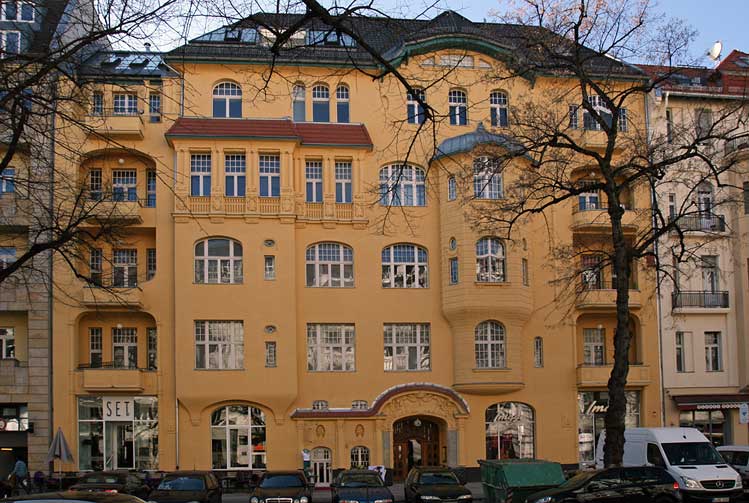
- Schlüterstrasse 36, March 2012 © Jewish Museum Berlin, photo: Gelia Eisert
In the1920s Berliners referred to the district of Charlottenburg, where Schlüterstrasse is located, as “Charlottengrad” because of the many Russian immigants had who settled around Kurfürstendamm after fleeing the October Revolution and the Russian Civil War.
The more than 100,000 Russian immigrants living in Berlin at this time included around 10,000 Russian Jews. Some of the Jewish immigrants were quite wealthy, including the large family of Chaim and Malka Kahan, who were able to take many of their assets into exile and reinvest them in Berlin.
The Kahan family had close ties to the neoorthodox Adass Jisroel congregation. They held their own prayer services in their large apartment at Schlüterstrasse 36/37 and sometimes had up to 100 guests on Shabbat and the Jewish holidays. Jonas Rosenberg, the Kahans’ son-in-law, was a trained cantor who led the services. Poor refugees from Eastern Europe were just as welcome as authors, artists, and politicians.
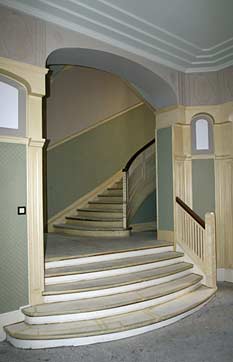
- Schlüterstrasse 36, March 2012 © Jewish Museum Berlin, photo: Gelia Eisert
Chaim Kahan made his fortune in the Russian oil business. He owned oil fields and refineries in Baku and Saratov and set up subsidiaries in Yekaterinoslav (now Dnipropetrovsk), Kharkov, Warsaw, and St. Petersburg.
After World War I, the Kahan family put down economic roots in Berlin. It was here that Chaim Kahan’s sons founded NITAG, one of Germany’s largest oil importers in the mid-1920s. In addition to storage facilities in Wilhelmshaven, Hamburg, Cologne, and Hanover, they built a nationwide network of gas stations. In 1924, a branch opened in Palestine as well.
After the Great Depression, under pressure from the Nazis, the Kahans sold their shares in the company and emigrated. Some went to Palestine, others to the U.S.
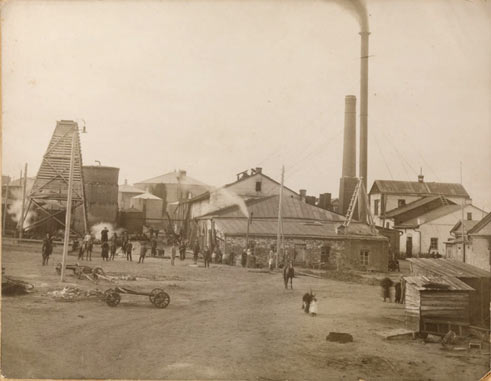
- Chaim Kahan's oil refinery was located in the industrial zone of Saratov (Russia). Ships first transported the oil up the Volga River and in Saratov it was processed, loaded onto trains, and transported to Siberia. 1910 © Haimi-Cohen family
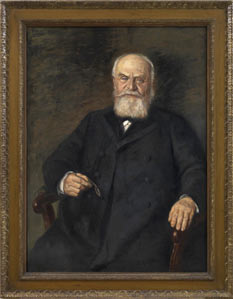
- This portrait by artist Hermann Struck (1876–1944) shows Chaim Kahan shortly before his death in 1916. Chaim was a successful businessman who contributed to the rise of the Russian oil industry in the late nineteenth century © Tel Aviv, Giza Haimi-Cohen
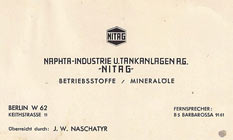
- NITAG business card, ca. 1924 © Tanhum Cohen-Mintz, Tel-Aviv
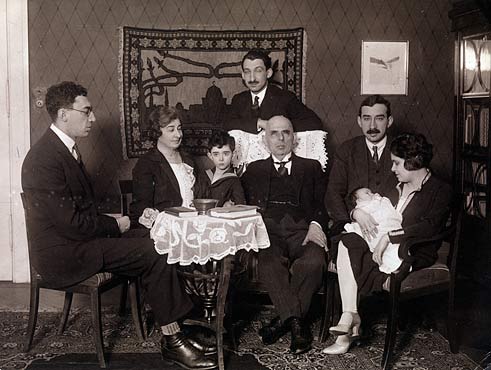
- The family of Baruch Kahan (1866-1936), Chaim and Malka Kahan's oldest son, celebrating the new addition to the family. The wall hanging in the background was made in the Bezalel workshops but is unfortunately no longer in the family’s possession today. 1927 © Haimi-Cohen family
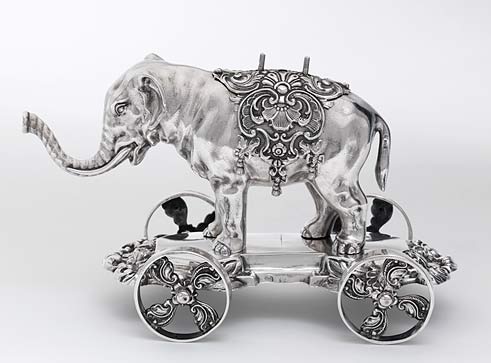
- The silver elephant is part of a centerpiece modeled on the royal tables of the Renaissance. The figure of a Chinese man once watched over the oil, vinegar, salt, and pepper on its back. Vienna, around 1860 © Ettinger-Rosenfeld family
This elephant-shaped plat de ménage rolled across the Ettingers’ long dining table in Uman. After getting married in 1909, David Ettinger and Rahel Kahan took the elephant with them to Yekaterinoslav, and when they made their difficult escape to Berlin via Moscow in 1923, it was among the items hidden in their luggage. But it was never unpacked in the German capital—for the Zionist David Ettinger, the ultimate destination was Palestine. Today the elephant makes its home with the next generation of family members in Tel Aviv.
Statement by the scholar Verena Dohrn
»From 1913 to 1933 the family of oil importer Chaim Kahan lived in an apartment on the second floor of Schlüterstrasse 36 in the Charlottenburg district in Berlin. The place that most poignantly conveyed to me the history of Jewish immigration from Eastern Europe was the Berliner Zimmer in this apartment—the large walk-through space in the corner of the building. The family used the room as a synagogue and up to one hundred people would gather there on holidays, including prominent figures such as Salman Schasar, later the president of Israel. Yet it also served other purposes. On Shabbat it was the sleeping quarters for the Eastern European rabbis who were staying with the family. It is said they slept on top of tables there. In everyday family life it was used as a study, but every now and then it was transformed into a drawing room where immigrants and German Jews met for convivial gatherings. The one-and-a-half meter walnut wainscoting on all four walls supports this story—in addition to memories recounted by the family.«
Verena Dohrn is the coordinator of the project »Charlottengrad and the Scheunenviertel« at the Free University of Berlin
Deutsch


